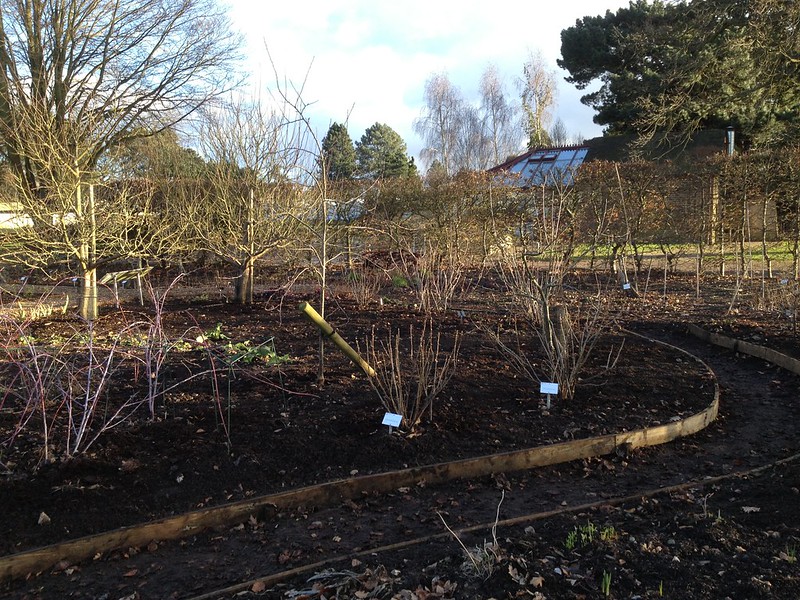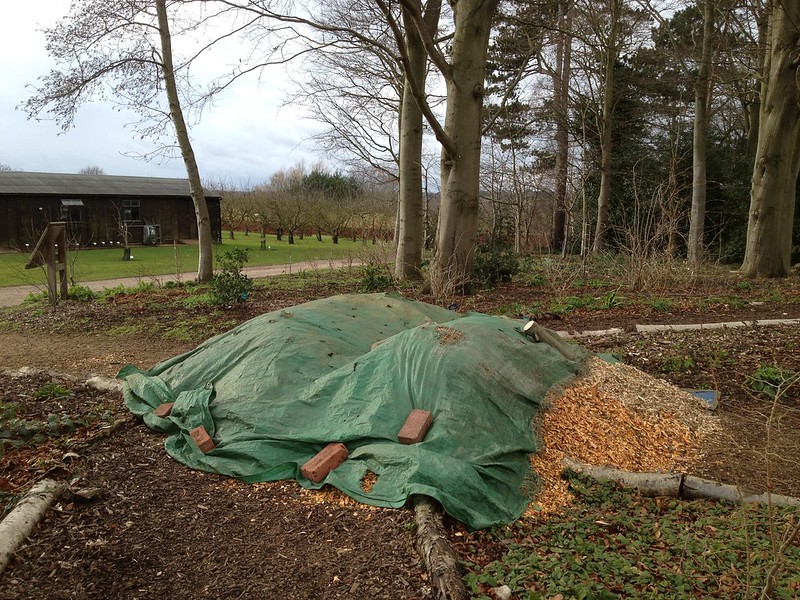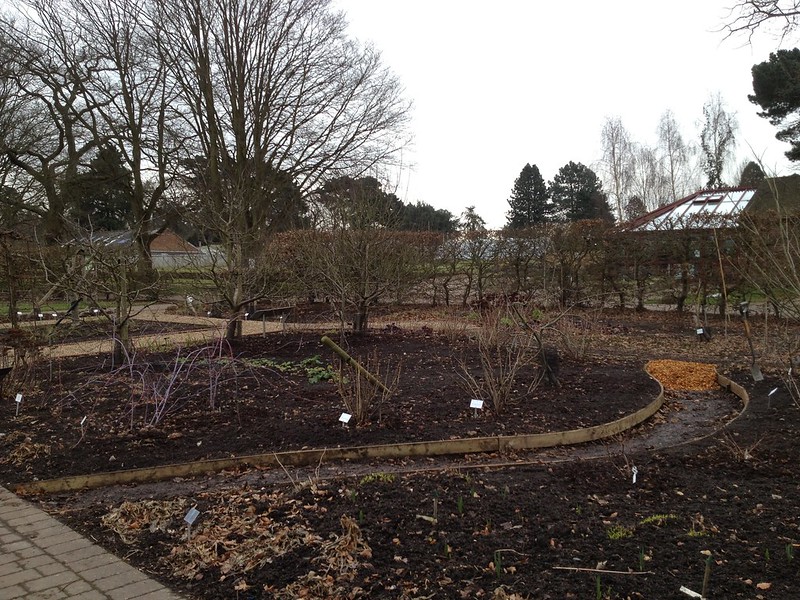 |
| The new path was edged! |
 |
| Woodchips ready for spreading |
Back from the weekend I found another surprise: my wonderful colleague on duty had edged the new path with wooden boards ready to take woodchips... which my fellow trainee in the arboretum got for me as quick as a flash.
Another of my plants, Aronia 'Viking' was ready to come out of the reception area and there were plenty of leaves from the several Carpinus outside the area to clear up... so you can guess how I spent my last two days in the area...
 |
| Leaf mould cage |
Actually, I started with the leaves, going back one step... In the Cottage Garden there is a lovely leafmould cage, in which leaves had been moulding away for a few years. As I had plenty of leaves to put in, I thought I would get some of the excellent crumbly conditioner at the bottom of the cage to topdress my plants.
 |
| Crumbly leaf mould |
Leaf mould was described in a book I was
reading recently as "the prince of soil improvers*" and hornbeam (together with oak and beech) makes top-quality** mould. Leaf mould is not rich in nutrients; however, it improves the organic matter content of soil (essential with our sandy soil) and helps retain moisture.
So I emptied the cage from the bottom and filled it back at the top.
Then it was the turn of planting the Aronia. Also known as chokeberry, the plant is great for winter colour and has edible berries that come in red, purple or black (depending on the species); the taste of said berries is more or less palatable (with some only suitable for cooking) and it apparently improves after frost. Chokeberries are allegedly rich in antioxidants and they are gaining popularity as a "super food" (although I never get too excited on a single fruit/veg as miraculous; I believe a balanced diet of fresh, local and non-chemically treated plants and some free-range meat and dairy, from animals fed as nature intended, is best).
 |
| Starting on the path |
Finally, it was the turn of filling in the path with woodchips (and topping up the old path too), a task made lighter by the precious help of a colleague and a volunteer.
The new path was inaugurated by our lovely regular visitors Brenda and Gordon, who have been taking an active interest on the progress of my area.
 |
| The finished path |
 |  |
| Parallel cuts make the wood bendy | Fixing to posts |
References:
* M. Wilson, RHS New Gardening, Mitchell Beazley, 2007
** RHS Wisley Experts, Gardeners' Advice, Dorling Kindersley, 2004
1 comment:
Hey there Paola
finally catching up with your blog and what you've been doing to the your plot... It really does looks fantastic -the path looks brilliant and the planting round the tree is looking great too -lovely to read about what you decided to do after having been around for that discussion - well done you :) penny
Post a Comment